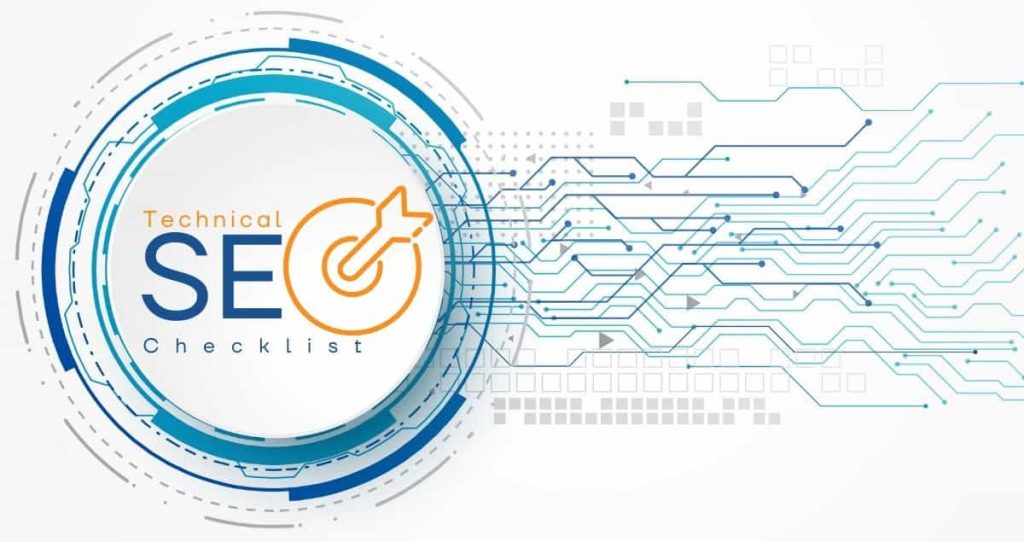142
Technical SEO is the backbone of any successful search engine optimization strategy. While content quality and backlinks often get the spotlight, technical SEO ensures that your website is search engine friendly from the ground up.
In 2025, search engines have become smarter, using AI algorithms and advanced crawling techniques to assess websites. This means that website speed, mobile usability, structured data, and security are more important than ever.
In this guide, we’ll explore what technical SEO is, why it’s essential, and provide you with a comprehensive 2025 technical SEO checklist to optimize your site like a pro.

 See also
See also

Table of Contents

1. What Is Technical SEO?
Technical SEO refers to optimizing your website’s infrastructure so that search engines can crawl, index, and render your content effectively. Unlike on-page SEO (which focuses on content) or off-page SEO (which focuses on backlinks), technical SEO deals with behind-the-scenes elements like:- Site architecture
- Mobile responsiveness
- Page speed
- HTTPS security
- XML sitemaps
- Structured data
2. The Difference Between Advanced SEO and Technical SEO
While technical SEO focuses on the technical foundation of your site, advanced SEO includes cutting-edge tactics that go beyond the basics, such as:- AI-driven content optimization
- Advanced schema markup
- Voice search optimization
- Core Web Vitals tuning
- International SEO (hreflang tags)
3. Why Technical SEO Is More Important in 2025
Search engine algorithms are evolving rapidly. Google’s updates like Helpful Content, Core Web Vitals, and Page Experience emphasize both content and technical factors. In 2025, here’s why technical SEO matters more than ever:- AI-driven search results demand faster, cleaner websites.
- Mobile-first indexing means your mobile site version is prioritized.
- Core Web Vitals have become ranking signals.
- Security & trustworthiness directly impact rankings.
4. The 2025 Technical SEO Checklist
Below is a step-by-step technical SEO checklist to ensure your site meets the latest standards.4.1 Website Crawling & Indexing
Goal: Ensure search engines can find and index your pages without issues. ✅ Check robots.txt file – Make sure it allows Googlebot to access important pages. ✅ Submit XML sitemap – Create and submit it via Google Search Console. ✅ Fix crawl errors – Regularly monitor for 404 errors and broken links. ✅ Avoid duplicate content – Use canonical tags where needed. Pro Tip: Use tools like Screaming Frog or Sitebulb to run a full crawl analysis.4.2 Website Speed Optimization
Goal: Achieve fast load times to improve both SEO and user experience. ✅ Compress images using next-gen formats like WebP or AVIF. ✅ Use a CDN to deliver content faster worldwide. ✅ Minimize CSS & JavaScript to reduce page load times. ✅ Enable browser caching for repeat visitors. Pro Tip: Aim for a Google PageSpeed Insights score of 90+ for both mobile and desktop.4.3 Mobile-First Optimization
Goal: Ensure your website is fully responsive and easy to use on mobile. ✅ Responsive design that adapts to all screen sizes. ✅ Clickable buttons & readable fonts for mobile users. ✅ Avoid intrusive pop-ups that block content. Pro Tip: Test your site with Google’s Mobile-Friendly Test tool.4.4 Core Web Vitals
Goal: Improve metrics that directly affect rankings. ✅ LCP (Largest Contentful Paint): Under 2.5 seconds ✅ FID (First Input Delay): Under 100 ms ✅ CLS (Cumulative Layout Shift): Below 0.1 Pro Tip: Use Google Search Console’s Core Web Vitals report for improvement tips.4.5 Secure Your Website (HTTPS)
Goal: Build trust with users and search engines. ✅ Install an SSL certificate. ✅ Redirect all HTTP pages to HTTPS. ✅ Fix any mixed content errors. Pro Tip: HTTPS is now a default ranking factor in Google. See also
See also
- Hostinger Review 2025: Is It the Best Budget Hosting?
- Hostinger for WordPress: Full Setup + Performance Guide
- Hostinger vs GoDaddy: Who Offers Better Value?
4.6 Structured Data & Schema Markup
Goal: Enhance search visibility with rich snippets. ✅ Use JSON-LD schema markup for articles, products, reviews, FAQs. ✅ Validate markup with Google’s Rich Results Test. ✅ Add BreadcrumbList schema for better navigation in SERPs. Pro Tip: Implement FAQ schema to increase CTR.4.7 URL Structure & Internal Linking
Goal: Create a clean, organized website structure. ✅ Use short, descriptive URLs (e.g., /technical-seo-checklist). ✅ Avoid dynamic parameters when possible. ✅ Create a strong internal linking strategy. Pro Tip: Every important page should be 3 clicks or less from the homepage.4.8 Fix Broken Links & Redirects
Goal: Maintain a healthy site with no dead ends. ✅ Check for 404 errors monthly. ✅ Use 301 redirects for moved pages. ✅ Avoid redirect chains and loops. Pro Tip: Broken links harm both SEO and user experience.4.9 Image SEO
Goal: Make images indexable and optimized. ✅ Use descriptive alt tags with target keywords. ✅ Compress images without losing quality. ✅ Implement lazy loading for better speed.4.10 Advanced Technical SEO Tactics
For those ready to go beyond the basics:- AMP (Accelerated Mobile Pages) for faster mobile loading.
- International SEO with hreflang for multilingual sites.
- Log file analysis to understand bot behavior.
- Cloudflare Workers & Edge SEO for custom server-side tweaks.
5. Technical Tools for 2025
The right tools can make optimization easier:- Google Search Console – Crawl, index, and performance monitoring.
- Screaming Frog SEO Spider – In-depth crawl analysis.
- Ahrefs / SEMrush – Backlink & keyword tracking.
- PageSpeed Insights – Speed performance metrics.
- GTmetrix – Detailed performance reports.
6. Common Technical SEO Mistakes to Avoid
- Blocking important pages with robots.txt by accident.
- Forgetting to update XML sitemaps after site changes.
- Having duplicate content due to poor canonicalization.
- Ignoring mobile-first indexing requirements.
7. The Future of Technical SEO
In the coming years, expect technical SEO to become even more automation-driven and AI-powered. Technologies like voice search, visual search, and AR/VR integration will require advanced optimization strategies. To stay ahead in 2025 and beyond:- Keep learning about new Google updates.
- Audit your site regularly.
- Combine technical SEO with high-quality content and link-building.



